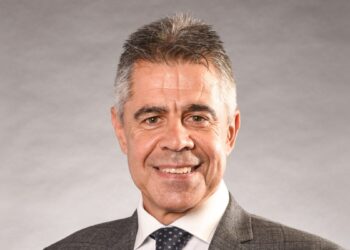The PBR (1052263188063) dealt with an SMSF, established in Australia, with assets all located domestically, but with a member who had to relocate overseas for medical treatment.
The fund has a corporate trustee and the member is a director of the corporate trustee. A general power of attorney has been appointed as the member’s attorney.
The member continues to operate their Australian bank account and draw their allocated pension from the fund.
Several general assumptions were made by the ATO, including that an EPOA would be appointed to act in the member’s capacity as director of the corporate trustee, and that the control and management of the fund would be undertaken by the power of attorney for the period the member is outside of Australia.
Additionally, it was assumed the member would not make contributions to the fund while overseas.
The ATO was asked to consider whether the fund could satisfy the definition of an Australian superannuation fund under subsection 295-95(2) of the Income Tax Assessment Act 1997 (ITAA 1997).
In its ruling, the regulator said that for a self-managed superannuation fund to receive the tax concessional rate of 15 per cent, it must be a complying superannuation fund as per section 42A of the Superannuation Industry (Supervision) Act 1993 (SISA).
To be a complying fund it must satisfy the residency test at all times during a year of income and must meet the definition of an Australian superannuation fund under subsection 295-95(2) of the ITAA 1997.
The first test that an Australian superannuation fund must satisfy is that the fund was either established in Australia, or any asset of the fund is situated in Australia at the relevant time.
The ruling stated that in this case, the fund was established in Australia and all assets are located in Australia. Therefore, the first test under paragraph 295-95(2)(a) of the ITAA 1997 is satisfied.
The second test, and one of the key requirements that an SMSF must satisfy to be an Australian superannuation fund at a particular time, is that the central management and control (CM&C) of the fund is “ordinarily” in Australia.
Regarding appointing a power of attorney and the location of CM&C, the SIS Act states that all members are required to be trustees of an SMSF or a directors of the fund’s corporate trustee to meet the definition of an SMSF under section 17A of the SISA.
“Under subparagraph 17A(3)(b)(ii) of the SISA a legal personal representative who holds an enduring power of attorney granted by a member may be a trustee of the SMSF, or a director of the corporate trustee of the SMSF, in place of the member without causing the fund to fail to satisfy the definition of an SMSF,” the ruling stated.
“A person who holds an enduring power of attorney for a member qualifies as a legal personal representative.”
Additionally, to comply with subparagraph 17A(3)(b)(ii) of the SISA, the legal personal representative must be appointed as a trustee of the SMSF or a director of the corporate trustee of the SMSF. The member must cease to be a trustee of the SMSF or a director of the corporate trustee except where the legal personal representative is appointed as an alternate director.
“Where an overseas member wants to appoint an alternative person to be their legal personal representative (and director of corporate trustee) then they can grant a new enduring power of attorney to the person of choice and revoke the former,” the ruling continued.
“Based on the statements provided, so long as the member validly appoints an enduring power of attorney, who exercises the CM&C of the fund such that the CM&C is ordinarily in Australia, the fund will satisfy the CM&C test.”
The third test that must be satisfied for an SMSF to be an Australian superannuation fund at a particular time is the “active member” test in which the fund must have no active members or have active members who are Australian residents and who hold at least 50 per cent of the total market value of the fund’s assets attributable to super interests, or the sum of the amounts that would be payable to active members if they decided to leave the fund.
However, as per subsection 295-95(3) of the ITAA 1997, a member is not an active member if contributions have been made to the fund on their behalf and:
- They are not a resident of Australia.
- They have ceased to be a contributor.
- The contributions made on their behalf, after they ceased to be an Australian resident, were made for the time they were an Australian resident.
“If all members of an SMSF are non-residents of Australia and a member makes a contribution to the fund, then the test will be failed as there are no Australian resident active members holding a superannuation interest in the fund,” the ruling stated.
“Based on the statements provided, the member will not make contributions to the fund while they are outside Australia, and no contributions will be made on their behalf. So long as that is the case, they will not be active members and the ‘active member’ test will be satisfied.”
Based on the information provided, the PBR stated the fund would continue to be an Australian superannuation fund for the purposes of section 295-95 of the ITAA 1997 (and a complying superannuation fund for the purposes of section 42A of the SISA), so long as the CM&C test and the active member test are satisfied at all times during the member’s absence from Australia.


